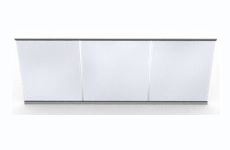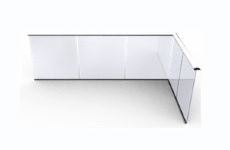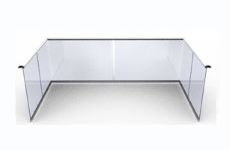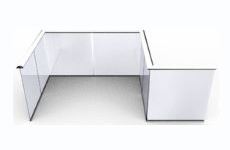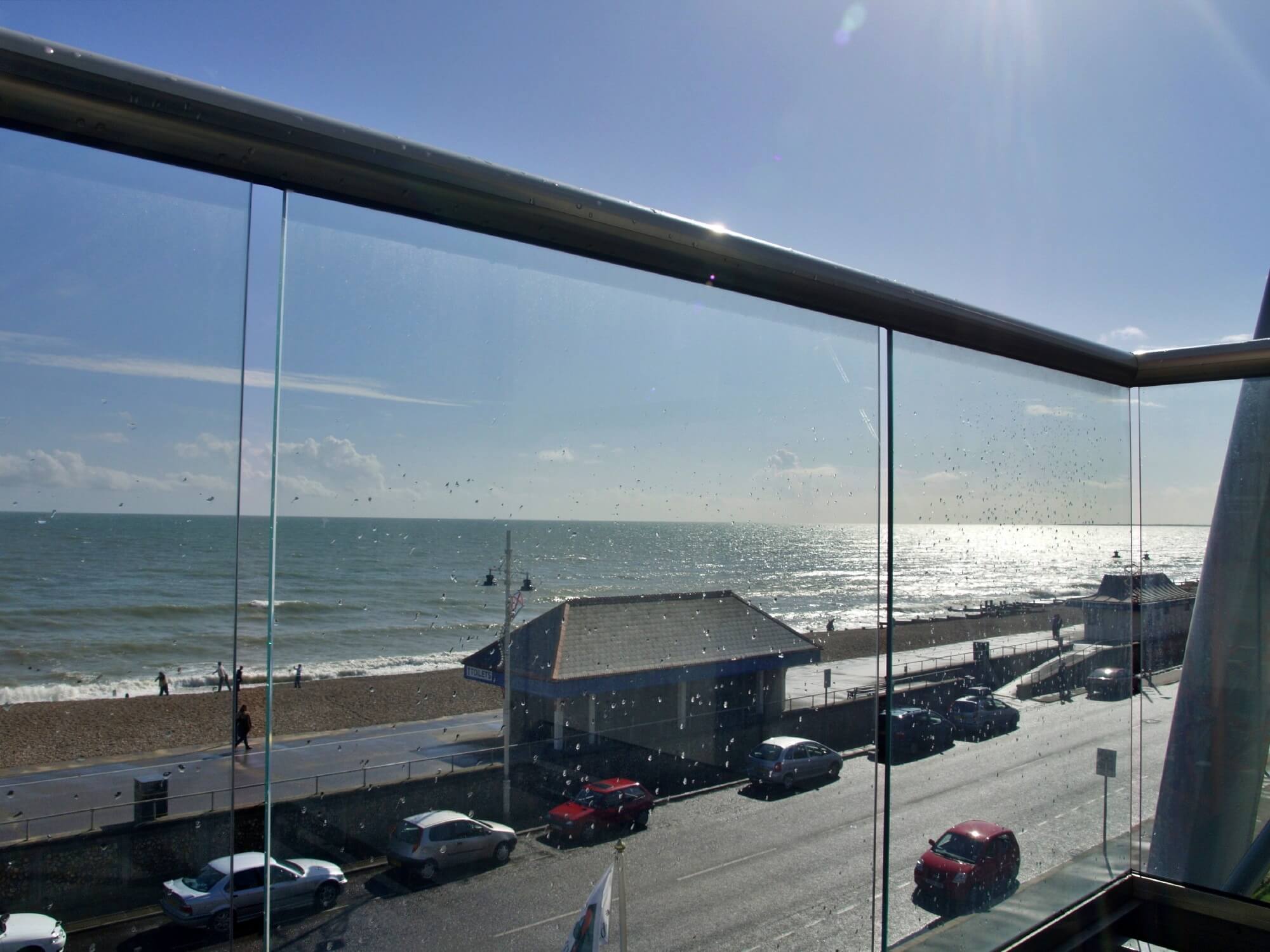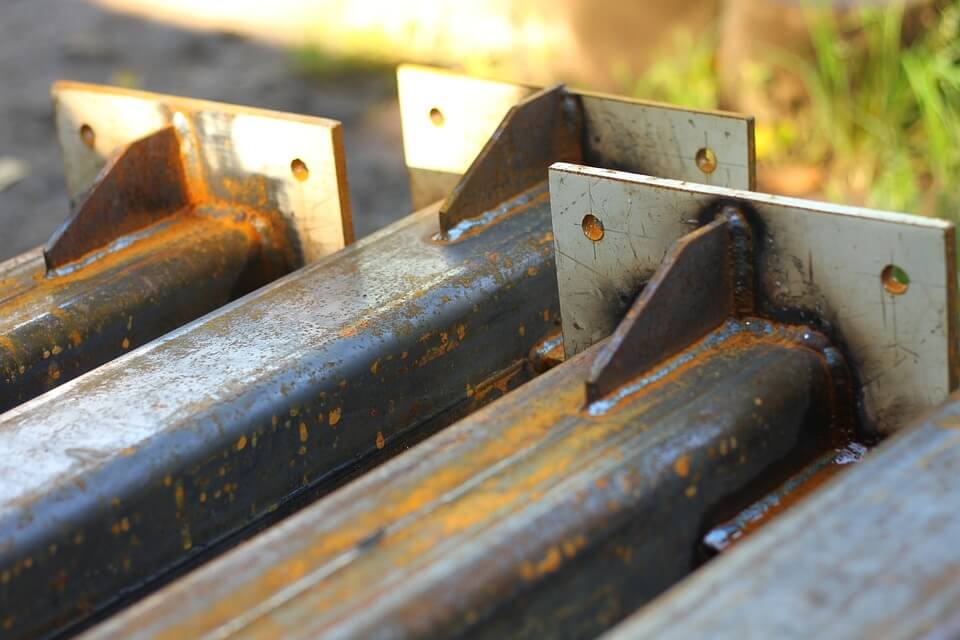Why should I choose an Aluminium balustrade? Surely Stainless Steel, Iron or Wood would be better?
Glass Balustrades | Juliet Balconies | Galleries | Articles | Case Studies
Choices, choices! When it comes to picking a material for a new balustrade there’s a lot to choose between. The four main options for a balustrade tend to be pretty constant – aluminium, stainless steel, wrought iron and wood. There’s a lot of variation between how they’re used. Some are used as more of a fence while others use glass panels for greater light flow and a sense of space.
But what is the difference between these four material choices?
Appearance
Appearance is a very personal factor and will depend on your property’s style as much as your individual preferences.
Aluminium and stainless steel balustrades have a modern, sleek appearance that suits a variety of homes. Wrought Iron provides a more industrial aesthetic, a look that suits some property styles perfectly. The visibility of the metal depends on the type of balustrade design you choose. With some types of metal balustrading, the glass is the only visible feature creating a very stylish and unobtrusive effect. Our frameless balustrades are a perfect example of this.
New wooden balustrades have a rustic appeal that some people love. Wood often blends in with a property and its surrounding decking area creating an area that’s inviting and naturalistic. A few coats of paint will add extra colour and character to your home for an even more personalised look.
Maintenance
How much do you value your spare time? Or, to put it another way, how much are you prepared to pay someone to sand, paint or wash your balustrades? If you’re looking for a lower maintenance option, then aluminium balustrades are probably the best choice for you.
Because aluminium balustrades are often anodised, they are as close to maintenance-free as it’s possible to get. Sure, nature runs oblivious so you can’t protect against spider webs or bird droppings, but you can certainly cast aside the likelihood of any heavy-duty maintenance jobs and use that time to chill out on your decking with a cold beer instead. Anodised aluminium is an especially good choice for coastal locations as the balustrades will stay looking at their best and won’t corrode or stain.
Wrought Iron and stainless steel need a degree of maintenance to keep them at their best. Although stainless steel should never rust, it is susceptible to ‘tea-staining’, especially if you live in a particularly damp, polluted or salty environment. Poolside balustrades are also vulnerable. Without regular maintenance, corrosive particles – especially salt and chlorine – can corrode the fine outer layer of stainless steel which causes discolouration. Maintenance is simple enough – regularly washing the balustrades with soapy water will do the job. Experts recommend a good wash-down every couple of months, although you’ll need to do this more frequently if you live by the coast. Should tea staining set in, you’ll need a specialist product to set things right.
It’s worth pointing out here that high quality marine grade stainless steel will require less maintenance than cheaper grades of stainless steel. Stainless steel grading is a complex subject, but essentially the cheaper it is, then the lower the grade will be and the harder it will be to keep it looking its best. Something to bear in mind when you’re making your choice.
As good as wood looks when you first install it, it takes a lot of maintenance to keep it looking tip-top. Installing wooden balustrades commits you to annual maintenance. This will involve cleaning and reapplication of oil, stain or protector. If you’ve painted your balustrading, you’ll need to sand down and repaint on an annual basis to keep it performing at its best and looking fresh.
Safety
Although we place safety at the centre of all our designs, we know your safety expectations may vary depending on where you’re installing your balustrades (for instance roof terrace or low-height decking area) and who will be using that area. If you’re installing balustrades at height or in any situation where vulnerable people will use them – the young, elderly or infirm – we’d recommend you plan for safety first.
If well-manufactured and well-installed, there’s very little difference between the safeties of aluminium, stainless steel or wrought iron balustrades. For this reason, we’d recommend you investigate the manufacturer’s safety information. Some aluminium balustrades (such as ours) are produced to exceed British Safety standards making them - quite literally - as safe as houses. Others will not be so secure, especially the too good to be true “buy it now” offers you may see online. The best advice we can give you here is to check the manufacturer’s website for details. If you can’t see safety confirmation, don’t risk it.
When it comes to wooden balustrades, safety is less easy to assure. Many wooden balustrades do not come as a system and are instead installed by a builder or carpenter. The safety of that balustrade will depend on the skill of your installer. Remember also that even the best quality wood cannot match the strength of aluminium, iron or steel, making it unsuitable for balustrading that’s used at elevated heights.
There are other risks with wooden balustrades – poorly cared-for wood will start to rot and become unstable. You should also remember that wood is flammable and may pose a fire safety risk.
Ease of installation
Thinking of installing a balustrade yourself? Great stuff. Pull in a working buddy and you can save yourself the cost of getting the professionals in. But does material have an impact on the ease of installation?
Aluminium balustrades are rightly popular with the committed home builder. Using a manufacturer who gives you a range of options means all you need to do is choose the balustrade type and size you want. Get your tools sorted and you’ll have everything you need to install your new balustrading; it’s just like a giant Meccano set! Another of the major benefits of fitting an aluminium balustrade yourself is the lightweight nature of the metal posts and handrails. Weighing in at a third of the weight of iron and steel, it’s easy to fit and manoeuvre. This lighter weight also means it’s cheaper to transport.
In contrast, stainless steel and wrought iron balustrades weigh considerably more than aluminium, which can make them more awkward to fit, especially if you’re doing so at height and need to do a lot of lifting. This makes both iron and stainless steel less suitable for properties and locations where weight is a consideration.
With wooden balustrades you’ll need a good level of carpentry to create something that looks good and is safe. Your local timber merchants will be able to deliver the wood and some pre-cut pieces to you, but you’ll need to draw up the plans and have faith in your measurements for an end result you’re proud of. For this option you’ll need to add planning time into the mix alongside the actual construction of your balustrade.
Environmental Impact
Every purchase we make has an impact on the environment, whether we like it or not.
Aluminium is an economical product to work with, using less energy during production than iron or stainless steel. Its light weight also means it’s less carbon-hungry to transport. The environmental benefit of aluminium is a subject in itself you can read more about it here.
Both steel and aluminium can be recycled infinitely. Once a steel or aluminium balustrade reaches the end of its life, it can be recycled and used in some other form – perhaps another balustrade!
It’s easy to assume that wood is the best choice for the environment. But do dig into that assumption before making a choice. Wood must be grown and felled before it can be used in balustrading. Using FSC or PEFC approved wood will give you proof that the wood has been responsibly sourced and farmed. If it is not approved, it won’t be sustainable. It’s also worth considering the longevity of a wooden balustrade. Although some wood can last for decades, it’s more typical to see treated softwood last for around 10-15 years. Untreated softwood may need to be replaced in as little as 5 years. When you consider it takes around 40 years for a tree to grow large enough to create the wood for that balustrading (that’s for softwood, hardwood is typically 150 years), a lifecycle of less than 15 years may feel wasteful.
Pricing
Prices vary hugely. You could build your own wooden balustrade for next to nothing, especially if you use discarded or repurposed wood.
Stainless steel, Iron and aluminium balustrades are more comparable, but ultimately the cost comes down to factors that aren’t immediately obvious. Production location is one detail – a product that’s produced in the UK may be more expensive than one that’s produced in China for instance. The presence of warranties is another factor.
Because things change so quickly we’d suggest you look around the internet for the latest information on stainless steel, wrought iron or wooden balustrades. Our pricing calculator will tell you the price of a British-produced anodised aluminium balustrades with a 10-year warranty. You can visit our Balustrade Designer here to cost up your project.
